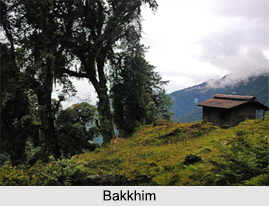 Banawali is an ancient archaeological site which is a part of the Indus Valley Civilization and was previously known as "Vanawali", situated in Fatehabad District, Haryana. This site was excavated by Dr. R.S. Bhist of Archaeological Survey of India. The archaeological findings portray the existence of cultures dating to Pre-Harappan Age or Period I, Mature Harappan Age or Period II and Post-Harappan Age or Period III.
Banawali is an ancient archaeological site which is a part of the Indus Valley Civilization and was previously known as "Vanawali", situated in Fatehabad District, Haryana. This site was excavated by Dr. R.S. Bhist of Archaeological Survey of India. The archaeological findings portray the existence of cultures dating to Pre-Harappan Age or Period I, Mature Harappan Age or Period II and Post-Harappan Age or Period III.
Location of Banawali
Banawali is present at a distance of nearly 16 kms away from Fatehabad and 120 kms from the north-eastern portion of Kalibangan, on the left banks of Saraswati River. The site was established on top of the upper, central river valley of Saraswati as opposed to Kalibangan which was existent in the lower middle part of the shrivelled up Saraswati River.
Period I, Period II and Period III Excavations at Banawali
Different types of pottery-wares including jars and vases bearing resemblance to those found in Kalibangan, critically planned homes composed of moulded bricks, burnt kilns which can be traced back to Period I (2500 to 2300 BCE) are excavated. It was called the Pre-Harappan Age. Period II (2300 to 1700 BCE) findings at Banawali have revealed nicely planned Harappan styled houses constructed in chessboard patterns measuring 200 metres by 500 metres, defence wall of 105 metres in length and 4.5 metres in height, homes equipped with storage utilities like strong-rooms at Kuntasi. Earthen floors, plastered walls, toilets, kitchens and living rooms were present in the houses which existed on both sides of the lanes. The fortified area comprised two specific regions, one meant for common masses and the other for the ruling sections of the society. Bara culture is represented by civilization of Period III (1700 to 1450 BCE). The most distinguished pottery of Bara culture is sturdy and heavy, made of fine clay, baked carefully and dressed with deep toned oily gloss.
Architecture of Banawali
Excavations organised at this site unearthed a grand fort belonging to Harappan era which exhibits mature urban settlements, as well as a defence wall which continued to about 105 metres. A series of stairs was discovered leading to Acropolis, from "Lower Town". A multi-roomed home has been uncovered which probably belonged to a merchant as suggested by the presence of weights, seals, well-planned kitchen and toilet. Numerous houses at Banawali are larger, possessing gold beads, smaller weights, stones with streaks of gold, carnelian, lapis lazuli and many more which indicates that it might have been a jeweller"s residence. Certain houses contained fire altars meant for rituals and rites.
Artefacts Discovered at Banawali
Innumerable historical artefacts were recovered from Banawali which consisted of painted earthenware vessels, ovens, cooking containers, S-shaped jars and tandoors. The painted designs included those of fish flowers, peacocks, pipal leaves, stars, deer, trees, honey comb patterns, checker board motifs and so on. Harappan seals engraved with designs of unicorn, wild goat, rhinoceros, ibex, etc. have also been found. Two of the most significant findings at Banawali are:
•Grey-ware embellished with two bucranian motifs done in applique which is similar to paintings performed over Pre-Harappan pots from Kalibangan, Kot-Diji, etc.
•The figure of a beast which boasts of crisscrossed marks on its back and neck suggesting it might have been a horse.
Apart from shell bangles, bronze pieces, gold beads and copper, a tortoise shell, terracotta cake, ivory comb and several objects of silver and gold are amongst the other artefacts discovered.
Other Archaeological Artefacts Discovered
Many other objects have been discovered at Banawali which include; marine shells which indicate commercial activities between the regions during the era of Indus Valley Civilization, female figures, a touchtone possessing gold streaks which could have been employed for testing the authenticity of gold, old bricks with the ratio 3:2:1 which was common in Kalibangan, but later bricks had a ratio of 4:2:1, a weight measuring 87.855 grams and plough models made of terracotta and seals in lower town.
The wall around this region probably protected this area from floods in Saraswati River and had disintegrated on account of the damage caused by its waters. A majority of the findings have been buried again but a well of Harappan age has been conserved appropriately that bears testimony to the existence of a village.



















